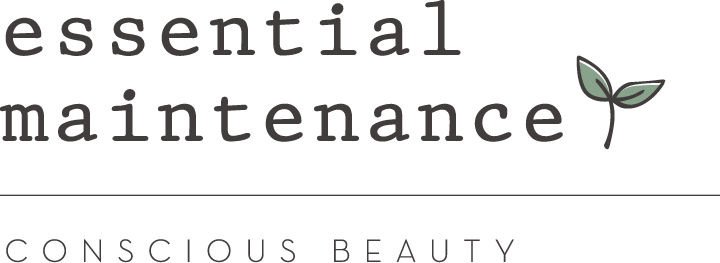Will Sugaring Break You Out?
We all love smooth, hair-free skin, don't we? But what happens when your chosen hair removal method leaves you with unexpected breakouts? Today, we're diving deep into the world of sugaring, a popular natural hair removal technique, to uncover the truth behind the notorious "sugaring breakouts." So, grab a cup of tea, sit back, and let's explore the facts together.
Alright, let's start with the basics. Sugaring is a method of hair removal that uses a sticky paste made from natural ingredients like sugar, water, and lemon juice. Unlike waxing, which can contain harsh chemicals, sugaring paste is gentle and hypoallergenic, making it suitable for a wide range of skin types.
Whether you have sensitive, dry, or acne-prone skin, sugaring can be your new best friend. The natural ingredients in the sugaring paste help nourish and moisturize your skin, leaving it feeling smooth and soft. However, as with any beauty treatment, it's essential to patch test and consult with a professional to ensure it's the right fit for your skin.
Ah, the million-dollar question: can sugaring really cause breakouts or skin irritation? The short answer is yes, but here's the thing – any hair removal method can potentially lead to these reactions. It's not specific to sugaring alone.
When it comes to breakouts or irritation after sugaring, there are a few factors at play. First, improper technique can contribute to skin reactions. If the sugar paste is too hot or applied incorrectly, it can cause redness or even minor burns. That's why it's crucial to choose a skilled professional who knows their way around the sugaring process.
Second, allergic reactions are a possibility. While rare, some individuals may be sensitive to the ingredients used in sugaring paste. If you have a known allergy to any of these components, it's best to steer clear of sugaring or opt for a patch test to be on the safe side.
Lastly, existing skin conditions like eczema or folliculitis can be aggravated by any hair removal method, including sugaring. It's essential to be aware of your skin's unique needs and consult with a dermatologist or esthetician if you have any concerns.
Now, let's uncover the potential reasons behind those pesky breakouts that may occur after sugaring. One common culprit is clogged pores. If the sugar paste or dead skin cells aren't effectively removed during the process, they can block your pores and lead to breakouts. This emphasizes the importance of proper exfoliation before and after sugaring to prevent pore congestion.
Another factor to consider is bacteria and folliculitis. If the tools used during sugaring aren't adequately sanitized or the environment isn't clean, bacteria can enter the hair follicles, causing inflammation and breakouts. To minimize this risk, always choose a reputable salon that follows strict hygiene protocols.
Hormonal influences and lifestyle factors can also play a role in post-sugaring breakouts. Hormonal fluctuations, stress, and diet can impact your skin's health, making it more prone to breakouts. Maintaining a balanced lifestyle, practicing stress management techniques, and adopting a skincare routine tailored to your skin's needs can all contribute to preventing breakouts.
Now that we've covered the possible causes of breakouts, let's discuss some practical tips to help you prevent them after sugaring.
First and foremost, make sure you choose a skilled and experienced esthetician who follows strict hygiene practices. A trained professional will ensure that the sugar paste is applied correctly, minimizing the risk of skin irritation.
Exfoliation is key. Prior to sugaring, gently exfoliate your skin to remove dead skin cells and unclog your pores. Similarly, continue exfoliating in the days following your sugaring session to prevent any buildup that could lead to breakouts.
Maintaining proper skincare hygiene is crucial. Cleanse your skin before and after sugaring to remove any residual sugar paste and keep your pores clean. Opt for gentle, non-comedogenic skincare products to avoid further clogging your pores.
Consider using skincare products with antibacterial or anti-inflammatory properties. Ingredients like tea tree oil or aloe vera can help soothe and calm the skin post-sugaring, reducing the chances of breakouts.
Finally, be patient and give your skin time to recover. It's normal for your skin to experience some redness or sensitivity after sugaring, but these symptoms should subside within a day or two. Avoid touching or picking at your skin, as this can worsen breakouts or cause scarring.
If you've tried sugaring and continue to experience breakouts, don't worry. There are alternative hair removal methods you can explore. Laser hair removal and electrolysis, for example, target the hair follicles directly, reducing the risk of skin irritation and breakouts. However, it's essential to consult with a professional to determine which method is suitable for your skin and hair type.
In conclusion, sugaring is generally considered safe for most skin types when performed correctly. While breakouts and skin reactions can occur, they are not exclusive to sugaring and can happen with any hair removal method. By understanding the potential causes of breakouts and taking preventive measures, you can enjoy the benefits of sugaring without worrying about unwanted skin reactions. Remember, finding the right hair removal method is a journey, and what works for one person may not work for another. Stay patient, be kind to your skin, and always prioritize its health and well-being.



